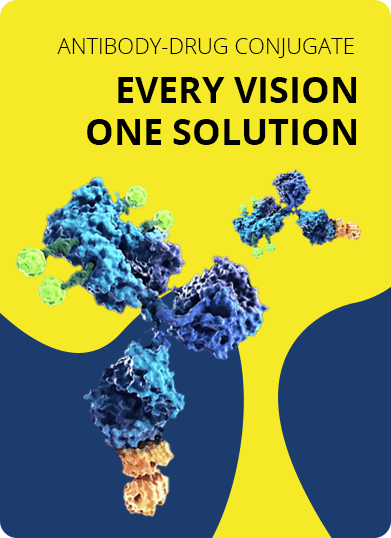- Home
- UTC Development
- Antibody-based Probe Development
- Antibody-Radioisotope Probe Development
Antibody-Radioisotope Probe Development Service
Radioisotope (also known as radioactive isotope, radionuclide, or radioactive nuclide) is an atom with excessive energy that can either create and emit new radiation/a new particle from the nucleus, or be transferred to one of the atom’s electrons thereby causing the electron ejection. This energy transferring process is termed radioactive decay, a random process happens at a single atom level and is impossible predict for one particular atom. However, for a collection of atoms of a single element, the decay rate, which is reflected by the half-life (T1/2), for that collection can be calculated. Radioisotopes can occur naturally or be prepared artificially. Although the low level of natural exposure to radioisotopes is harmless, the unplanned exposure to a relatively high level of radioisotopes is usually harmful to living organisms, including human beings. The degree of harm usually depends on a series of factors, including the properties of the element and the omitted radiation, the nature and amount of exposure, as well as properties of the living organisms. One of the most usual consequences upon radiation exposure is the increased risk of cancer occurrence. However, radioisotopes with suitable properties have been used in biomedical applications for the diagnosis and treatment of certain diseases, such as cancer.
Positron Emission Tomography (PET) is a precise and sophisticated technique using radioisotopes for the imaging and diagnosis of certain diseases, especially cancer. As the injected radioisotope decades in the body, the emitted positron combines with a nearby electron, resulting in the emission of two identifiable gamma rays, which can be detected by a PET camera and give very precise indication of their origin. Another new technique combines PET with computed X-ray tomography (CT) scans and co-register the two images graphed by both gamma rays and X-rays (PET/CT), enabling much higher diagnostic efficiency and accuracy.
Besides clinical applications, radioisotopes are also widely applied in pre-clinical studies of biomaterials and therapeutic agents. They often serve as the radioactive probes or labels in these applications. In vitro stability and concentration, as well as in vivo bio-distribution of biomaterials labeled with radioactive probes can be easily detected by using certain detectors. However, the small size of radioisotopes (only one single atom) leads to the low stability and controllability of radioisotopes. Therefore, it is desirable to conjugate and immobilize radioisotopes to larger functional entities such as antibodies for better control. The conjugation can be achieved through chemical reactions by using bifunctional linkers. A bifunctional chelate (macrocyclic Df-Bz-NCS) can chelate the zirconium-89 or gallium-68 radioisotopes and link them to the lysine-NH2 groups of antibodies. The radiolabeled antibodies (antibody-radioisotope probes) are able to recognize and interact with specific antigens to provide targeted imaging contrast or specific damage to tumor cells of the body. In the meantime, for solid tumors, it is highly advantageous to use small-size antibodies (such as single domain antibodies or scFv) coupled radioisotope probes to map or monitor the tumor development due to their small sizes and good tissue penetration capabilities. To sum up, antibody-radioisotope probes can be used for high-resolution imagery, cancer diagnosis, as well as radio-immunotherapy.
With expertise in bio-conjugation and radiolabeling chemistry as well as a large antibody library, Creative Biolabs provides customers with customary antibody-radioisotope probes that are suitable for high-resolution imagery and diagnosis of numerous diseases, including cancer, as well as some cardiac- or brain-related diseases. Besides the traditional high-specific and FDA approved full antibodies, Creative Biolabs also helps customers with specific demands to generate certain bispecific antibodies or antibody fragments (scFv) that are suitable for mini-size antibody-radioisotope probes. Moreover, the science team at Creative Biolabs is also able to provide customers with various antibody-radioisotope probes that are efficient for radio-immunotherapy. Please contact us for more information and a detailed quote.
For Research Use Only. NOT FOR CLINICAL USE.

Online Inquiry
Welcome! For price inquiries, please feel free to contact us through the form on the left side. We will get back to you as soon as possible.
